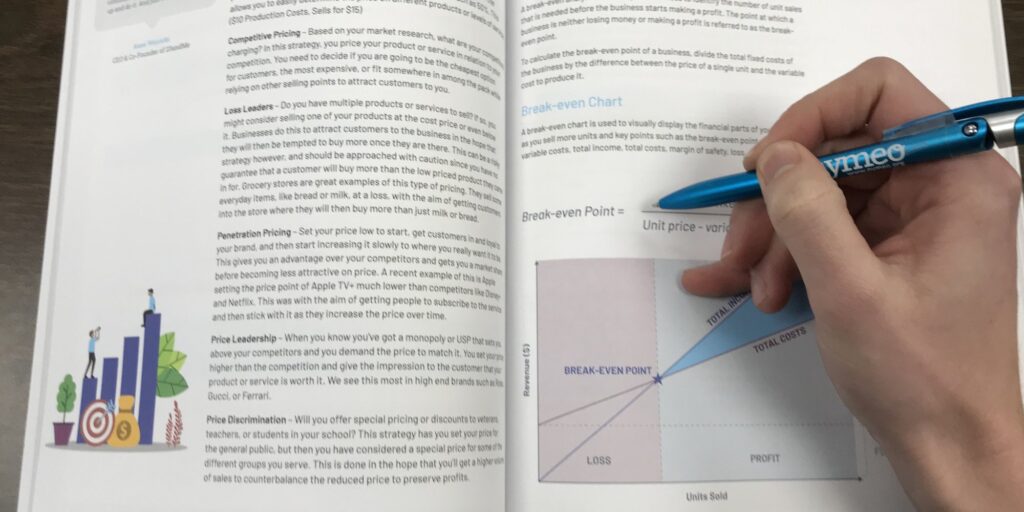Is this your first time guiding students through an entrepreneurship project? Or maybe you’ve done it plenty of times before, but have you started your own business? This is your moment!
The power and value that comes from being in the trenches with the students and modeling how to navigate the different challenges and successes that come with starting your own business is unbeatable in education.
Starting a business means trying to come up with a business idea, figuring out how to market to your target customer, and most important, dealing with failure along the way. If you haven’t been there yourself how can you expect to be THE BEST guide for your students. You may be good, or even great at teaching the content, but if you haven’t fully experienced it yourself, doing it with your students is an incredibly rewarding experience.
So how do you do it?
Use yourself as the guinea pig and let the students help you build your business while also building their own. Share what your strengths, passions, talents, and skills are. Identify the things that cause you pain in daily life or that impacts the people around you on a daily basis. Brainstorm ideas with your students on ways to provide solutions that play to your strengths and interests, but also solve a problem in a way that could be monetized. This semester we used a club I run in my school, The Millionaire’s Club, as our example. The club raises all its running costs through entrepreneurship projects, and we came up with the idea of running a concession stand for baseball and softball games at my school.
Once you have your idea, start each new section of the workbook by first looking at your own business, applying the new idea and answering the questions, and then let students turn their eyes to their own projects, having witnessed the process for figuring out how to apply these new concepts to a business idea.
The best part is that students won’t be directly copying you because their ideas are different. The students were able to look at how our club was going to approach the concessions stand idea, apply the lessons and strategies we were using, but couldn’t copy it directly since we had claimed that space.
The resources available and skills you possess might be unique to you, and you have the ability to tap a target market that may be out of reach for them. Instead, they will have to demonstrate higher levels of learning to apply what was modeled for them to a new situation and evaluate whether the same approach will work or if something different is needed.
It’s hard to learn about literature from someone who doesn’t read on their own time, or fitness from someone who hasn’t worked out in years.
Being an entrepreneur yourself will make classroom management and that initial buy-in so much easier once students can see that you are using the lessons you teach every day.
Plus, at the end you’ll now have a side business that can generate some extra income!
Of course the hardest part is fighting that impostor syndrome on day 1.
“How can I teach people about starting a business if I don’t know how to do it myself in the first place?”
The Instructor Edition will give you all you need to be able to act as the guide for students as they build their Simple StartUps but going that extra mile to model for students how to learn and grow along the way will be ten times more valuable in the long run. Model how to solve problems, apply new lessons, deal with failures, replicate successes, and master a new skill. This could be just as beneficial a project for you as it is your students!
Please don’t forget to share your Simple StartUp story as well as your students’ at www.thesimplestartup.com/stories. You can also connect with a community of like-minded teachers on Facebook in The Simple StartUp Community.


